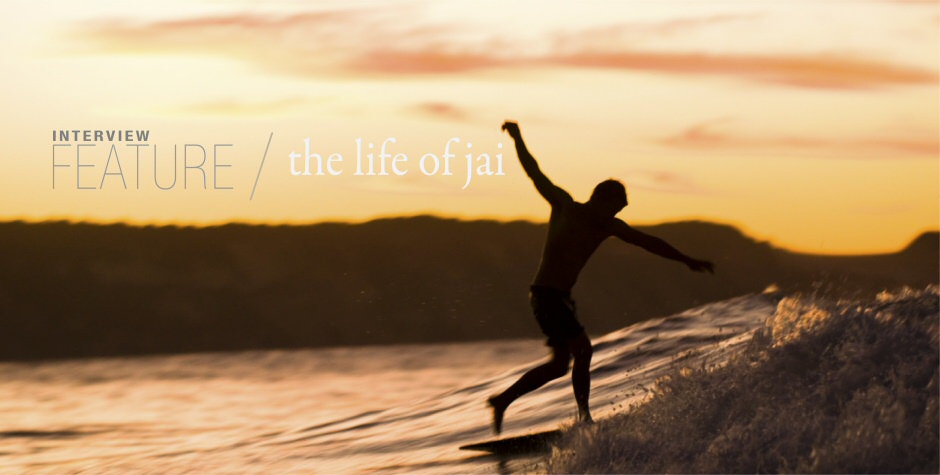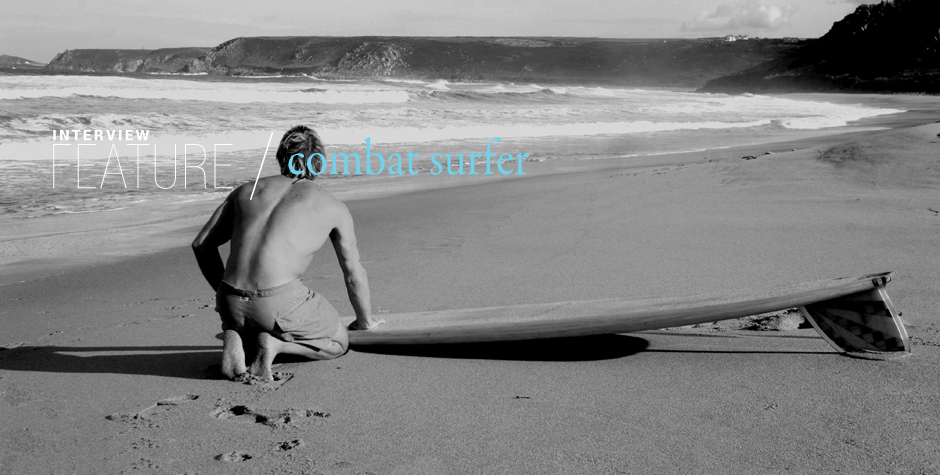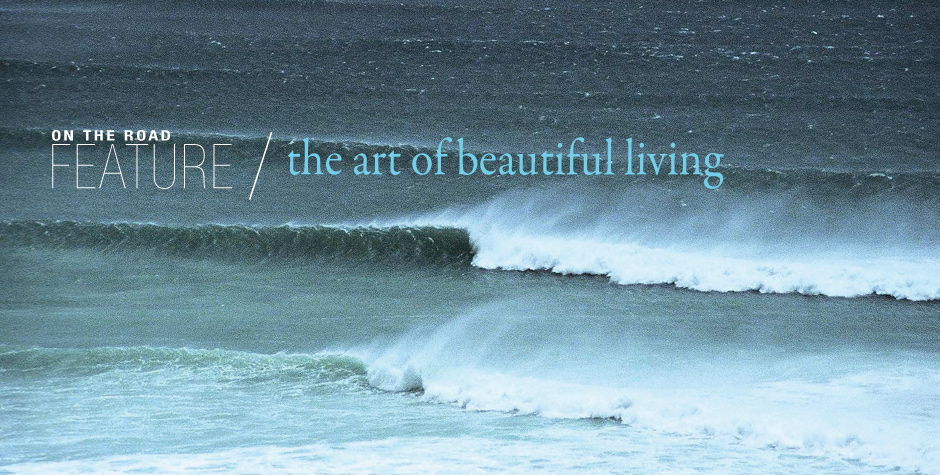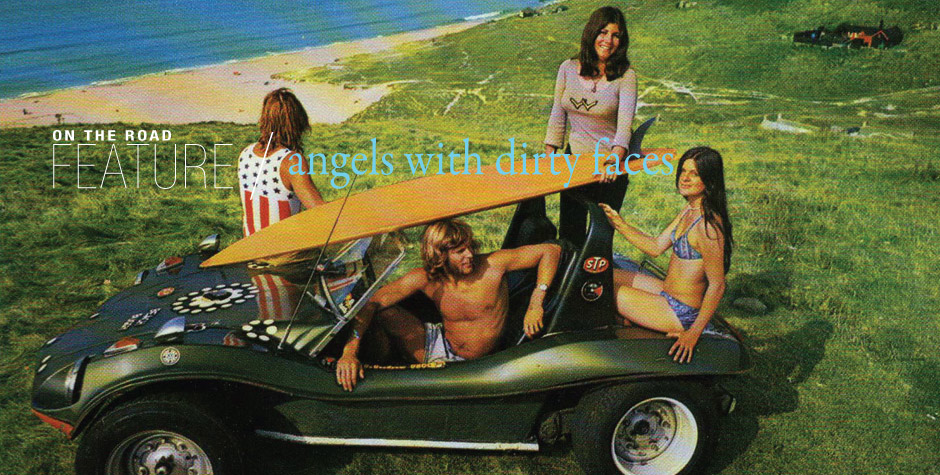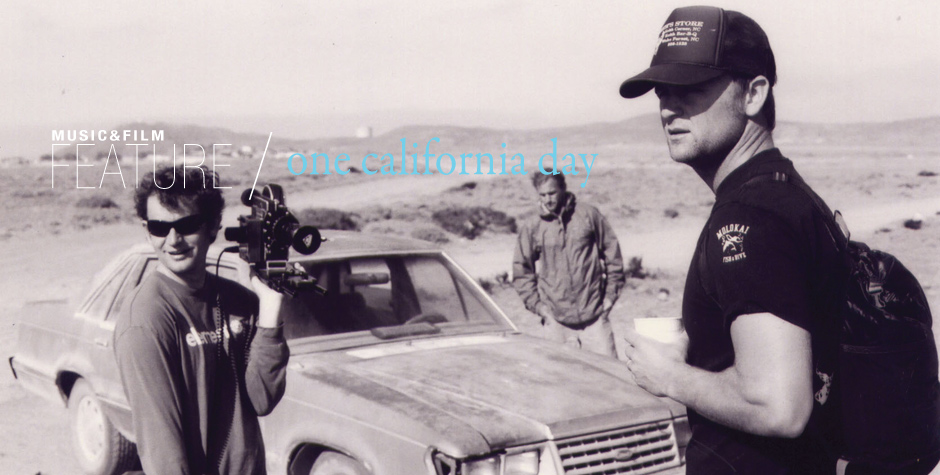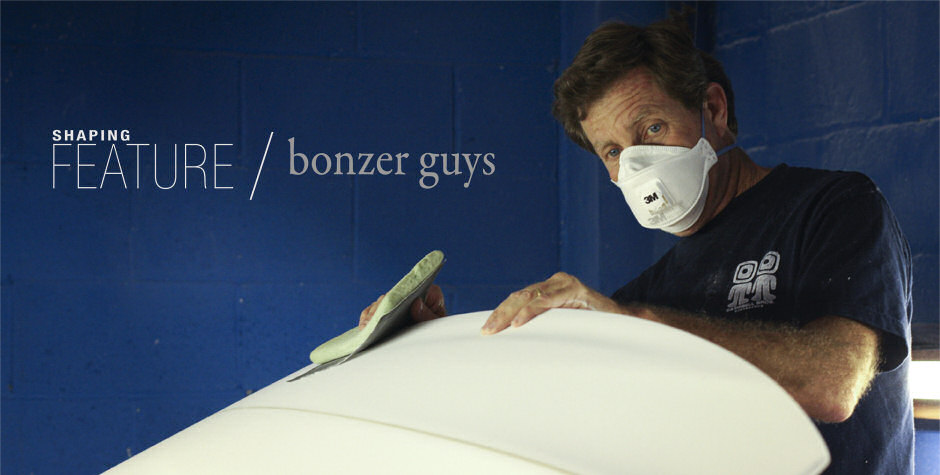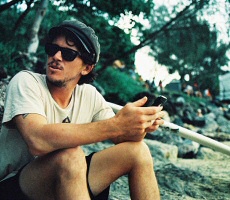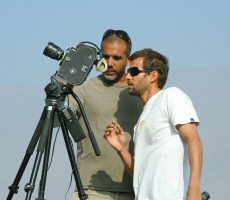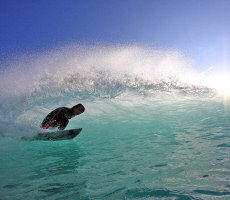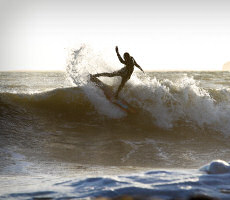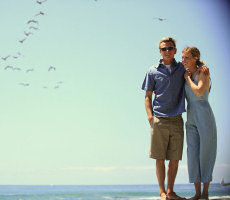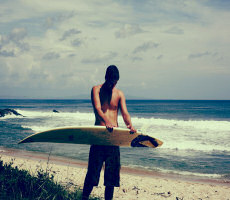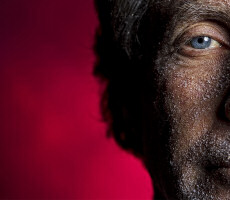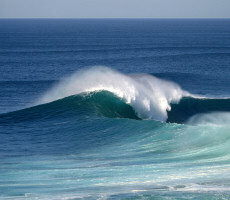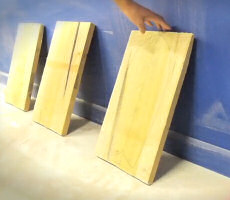Keep it local: Brazil
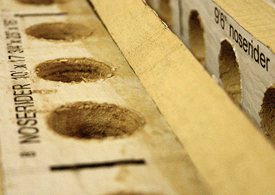 I first stumbled across Felipe Siebert during Floripa Cine Action in April this year. (Words by Luciano Burin – read this article in its original Portuguese on Luciano’s blog www.surfecult.blogspot.com)
I first stumbled across Felipe Siebert during Floripa Cine Action in April this year. (Words by Luciano Burin – read this article in its original Portuguese on Luciano’s blog www.surfecult.blogspot.com)
The classic beauty of his longboard and double-fin wooden fish showcased at the event captivated me, and made me think about how difficult it is to pigeonhole surfing as either a sport or an art form.
In theory, the act of gliding on waves can reach the level of art, as each surfer has the freedom to express himself on a board in the same way that a musician is free to compose, play and sing whatever he wants. But in Brazil, things don’t always work that way. You need only take a quick look at the standardisation that prevails on our beaches and you’ll soon be puzzled by questions like: “Who determined that all surfboards should be 6’2 squash-tail thrusters?” “Who decided that all surfboards should be made from polyurethane?” “Why is every surfer trying to perform the same manoeuvres on every wave?”
There’s a real absence of freedom as a result of this standardisation of surfing. What would happen to music if all musicians were obliged to play rock, with only bass, guitar and drums? Or to art if painters could only produce pictures with a limited colour palette?
 Fortunately, change is on the horizon, with the advent of new forms of surfing and the revival of old practices, as evidenced by the popularity of tow-in surfing, the SUP phenomenon, and the resurgence of interest in classic boards and alaias. This broad mix of approaches to surfing has freedom of expression on a board as its common denominator.
Fortunately, change is on the horizon, with the advent of new forms of surfing and the revival of old practices, as evidenced by the popularity of tow-in surfing, the SUP phenomenon, and the resurgence of interest in classic boards and alaias. This broad mix of approaches to surfing has freedom of expression on a board as its common denominator.
When I first discovered Siebert Woodcraft Surfboards I thought I had bumped into a vintage California surf brand. But to my surprise, the person responsible for this nostalgia was a 31-year-old fellow here in my hometown Florianopolis who, in 2006, began producing handcrafted hollow-wood style surfboards.
 Academically trained in biology and engineering, Felipe is a self-taught shaper who combines a respect for the past with contemporary technology. The results are works of art in their own right, but they also inspire surfers to experiment with new ways of expressing themselves on the waves. To me, Siebert’s work offers a way to escape the sameness and the capitalist stagnation of the surf industry – he combines a respect for the environment with the recovery of ancient forms of shaping.
Academically trained in biology and engineering, Felipe is a self-taught shaper who combines a respect for the past with contemporary technology. The results are works of art in their own right, but they also inspire surfers to experiment with new ways of expressing themselves on the waves. To me, Siebert’s work offers a way to escape the sameness and the capitalist stagnation of the surf industry – he combines a respect for the environment with the recovery of ancient forms of shaping.
How would you define the spirit of surfing?
This is a very complex issue. Nowadays it is fashionable to be a surfer, but surfing’s roots are as an underground culture – from its birth in California in the 1950s and 60s to the beginning’s of its popularity in Brazil a little later, it was a mark of rebellion against society. So I believe the true spirit of surfing is to get something creative and different – the opposite of what happens today, where almost everyone wants to be Kelly Slater. If it were possible for us all to be Slater, it would be interesting, but that is certainly not the case.
Avelino Bastos of Tropical Brasil (one of the top shapers in Brazil) said recently: “If our strange desire to surf like everybody else went away, I think the future of design would be much better.” I couldn’t have put it better…
 What’s the market for classic and longboards like in Brazil?
What’s the market for classic and longboards like in Brazil?
The longboard scene here is regionalised, being concentrated in Rio de Janeiro, Santos, and Balneario Camboriu. Here in Florianópolis this culture doesn’t exist – surfers here think longboards are for beginners or surfers who lack the physical prowess to use short boards.
Even though in California, Australia and Europe alternative models like hollow-wood longboards complete a surfer’s quiver, here even surfers with little ability insist on only surfing with the same board they see a WCT pro-surfer use. They forget that we don’t have three-foot plus, offshore clean waves everyday, and that they will eventually spend most of the summer struggling to ride their thin shortboards on the inside section.
 How do you see Brazil’s surf culture evolving in relation to the traditional centres of California, Hawaii and Australia?
How do you see Brazil’s surf culture evolving in relation to the traditional centres of California, Hawaii and Australia?
In California, where classic longboard is big, championships are completely ignored. I follow several websites and magazines and never hear the names of some longboard world champions such as the Hawaiian Bonga Perkins and Brazilian Phil Rajzman, surfers with a more progressive (modern) style.
Outside Brazil it seems that surf culture has split into two camps. There’s one set of people who worship the stereotypical surfer of the 1990s: bright, baggy boardies, waxed blonde hair, logo’d-up with all the major brands that sponsor the World Tour. Then there’s this new perspective, with a focus on surfing’s art and culture, which began in Hawaii and was nurtured in California from the 1950s, and has been distorted and developed over these last decades. This new segment emphasises the small and important things in surfing. The surf shops that follow this new trend value local products that can’t be found in other stores; products with soul, for want of a better word, designed by individuals, as opposed to the industrial products manufactured in China by large corporations. This enhances and develops a singular style of surfing, peculiar to each region.
In my experience, though, the majority of people lack the personality to follow their own line, and instead want to be like everyone else. It is easier to go with the crowd than to challenge yourself.
What or who inspires your work?
One of the things that excites me is to discover more about boards both past and present, and I love the movies and everything else to do with classic surf culture. Films like ‘One California Day’, ‘Sprout’, ‘Lines From a Poem’. I find inspiration in books like ‘Greg Noll: The Art of the Surfboard’, ‘Leroy Grannis’, ‘Stoked’, ‘Eddie Would Go’. There are so many incredible shapers that influence me: Tom Wegener, Greg Noll, Bing Copeland, Rich Harbor, Hobie Alter, Dale Velzy, Hap Jacobs, Dewey Weber, Gordon & Smith. And the new generation of shapers too, like Robbie Kegel (Gato Heroi), Dave Allee, Paulo Jacinto, Michel Junod, who are marrying functionality and classic style. Then there’s the surfers, like Alex Knost, Tom Wegener, Rasta, Joel Tudor, Tyler Warren, Jimmy Gamboa, CJ Nelson, Dane Perlee, among many others.
 You’re one of the pioneers in the manufacture of wooden boards in Brazil; what are your plans for the future?
You’re one of the pioneers in the manufacture of wooden boards in Brazil; what are your plans for the future?
Actually, I’m only a pioneer – or one of them – if you consider the ‘post-foam’ generation. In Brazil, even before the arrival of PU boards, we already had wooden models called Madeirite and hollow boards based on designs developed by Tom Blake.
This past year we have had a huge number of orders for boards. We’re also creating a new line of skateboards that should be ready for release in a couple of months.
We’re currently testing some lamination techniques that utilise less-harmful materials as an alternative to resin and woven fibreglass, but I suspect it will be some time before we can stop using the ordinary resins completely. In order for us to use these new materials on a large scale, we must be certain that they have strength and quality that’s at least equal to the materials already in use.
I believe that our path will be defined by the choices customers make when they invest in a new board. New techniques and materials invariably come at a higher cost to the consumer – but hopefully many people will be willing to invest in a clean material as long as it performs as well as those already on the market.
Felipe has recently collaborated with American artists Jesse Ledoux and Dustin Ortiz, and Brazilian artist (and Drift US blogger) Jair Bortoleto to release a limited-edition surfboard – it’s the first collaboration between an shaper and an artist in Brazil to create an artist signature model. Find out more here.
